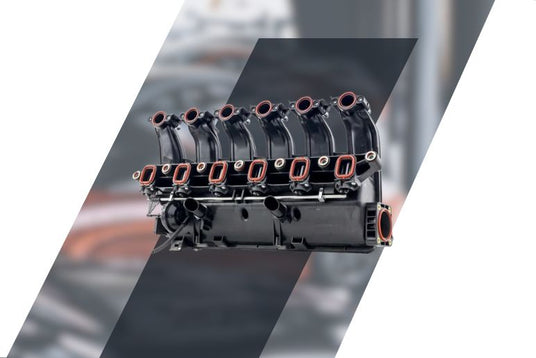Variable intake butterflies or butterfly valves (swirl flaps) were designed to improve engine efficiency, but over time they have become one of the greatest risks to its integrity.
Find out why removing it is one of the most important preventative measures you can perform on your vehicle.

The Hidden Danger in Your Admission: What Are Moths and Why Do They Fail?
Butterfly valves are small valves located in the intake manifold that open or close to optimize the turbulence of the air entering the cylinders.
The objective is to improve the air-fuel mixture at low revolutions.
The fundamental problem is the buildup of carbon deposits from the EGR system, which adheres to the butterfly valves and their shaft. This causes two types of failures:
This causes two types of failures:
1. Binding: The butterfly valves become stuck in one position, causing loss of performance, jerking, uneven idling, and the engine fault warning light coming on.
2. Breakage and Detachment (THE GREATEST RISK): Over time, the plastic or metal of the wing nuts becomes brittle. If one of them breaks, it is sucked directly into the cylinder .
The consequences are catastrophic and almost always involve the destruction of valves, pistons, the cylinder head, or even the turbo.
The Ultimate Solution: Benefits of Eliminating Moths
-
Total Reliability and Zero Risk of Breakdown:
This is the main benefit.
You completely eliminate the possibility of a butterfly destroying your engine, saving you thousands of euros in a major repair. -
Improved Airflow:
By removing this restriction from the intake manifold, the engine can "breathe" more freely and efficiently, especially at mid- and high-rev ranges.
-
End to Performance Problems:
Jerking and idling instability caused by system malfunctions are eliminated.
-
Simplification and Savings:
You reduce the mechanical complexity of the engine and eliminate a component prone to failure, saving on future maintenance or replacement costs of the intake manifold.
Is My Car Affected?
This system has been used by numerous manufacturers, and is especially known for causing problems with brands such as:
• BMW (most of its M47, M57, N47, N57 diesel engines)
• VAG Group (Audi, VW, SEAT, Skoda on 2.0 TDI, 2.7 TDI, 3.0 TDI engines)
• Opel / Saab (on Fiat/Alfa Romeo engines)
• Alfa Romeo / Fiat / Lancia
If you have any questions, please contact us to verify if your vehicle model is affected.
Legal Notice
Removing original vehicle components, such as intake manifold flaps, alters the factory design. Although it is not a primary pollution control system like the DPF or EGR, its function affects the combustion process. It is the customer's responsibility to inform themselves and comply with the regulations in force in their country.


